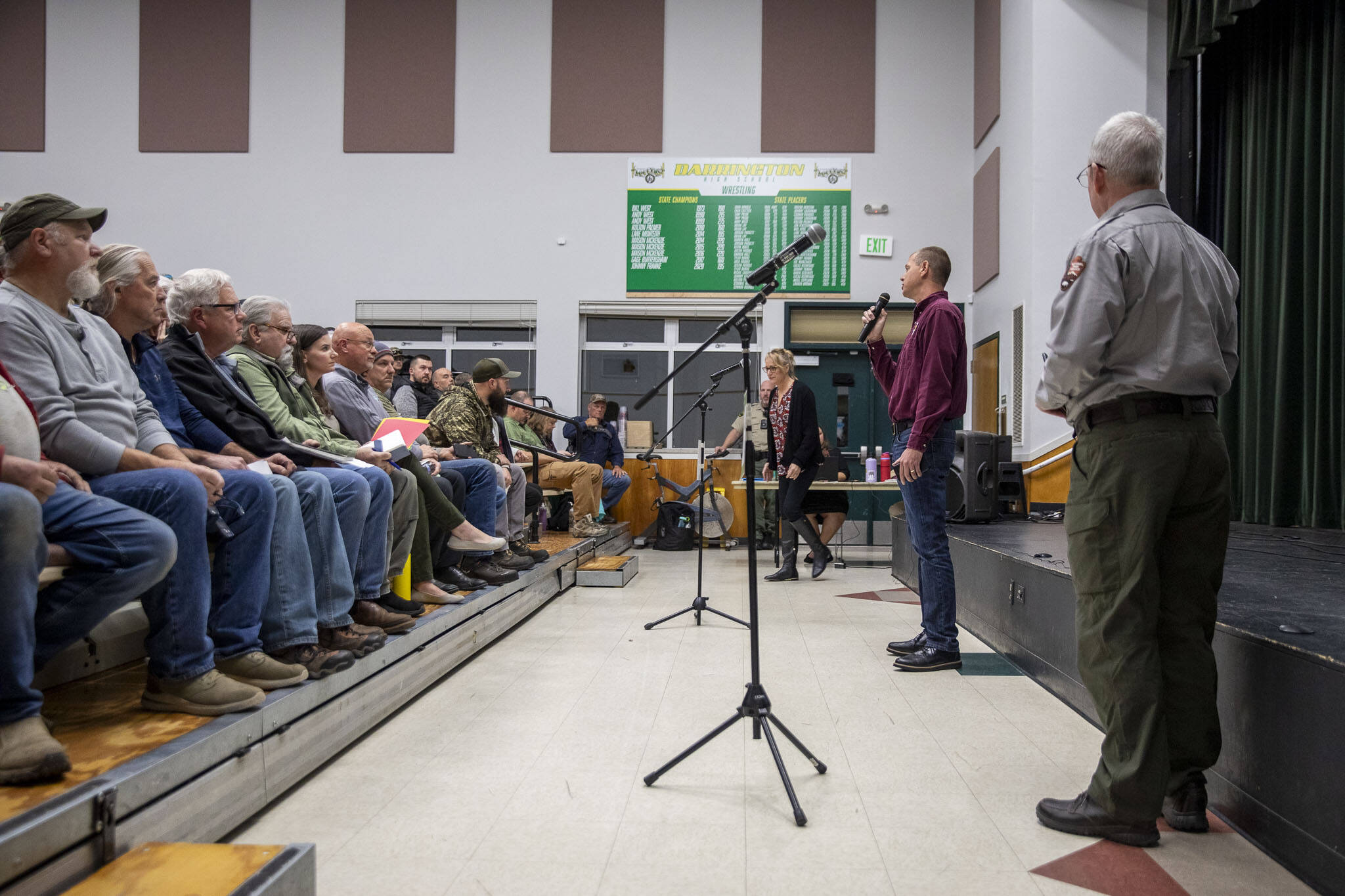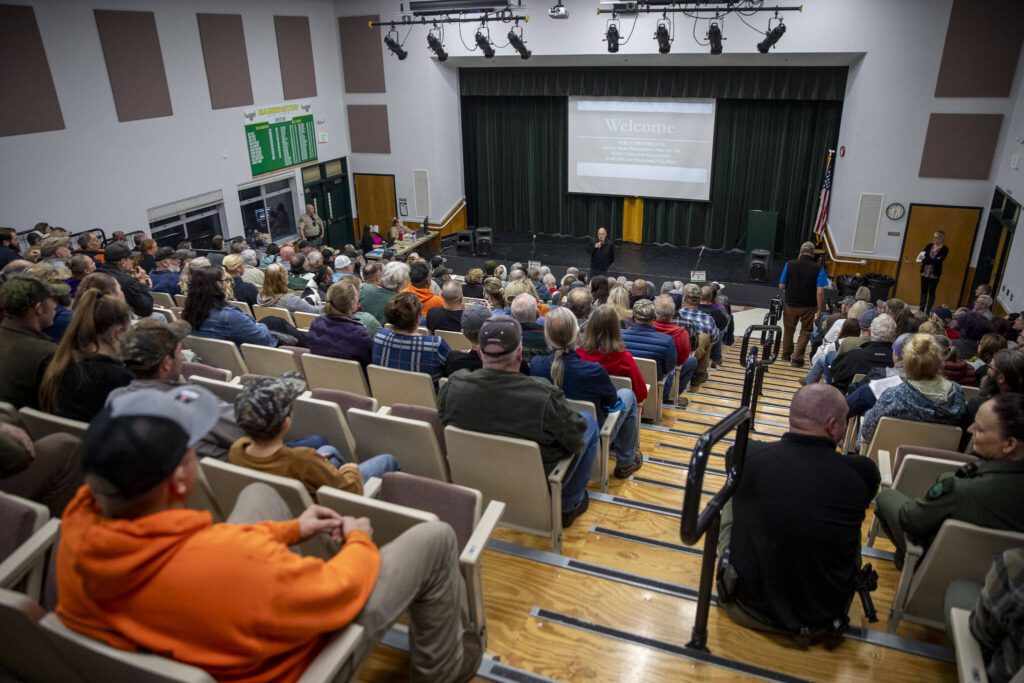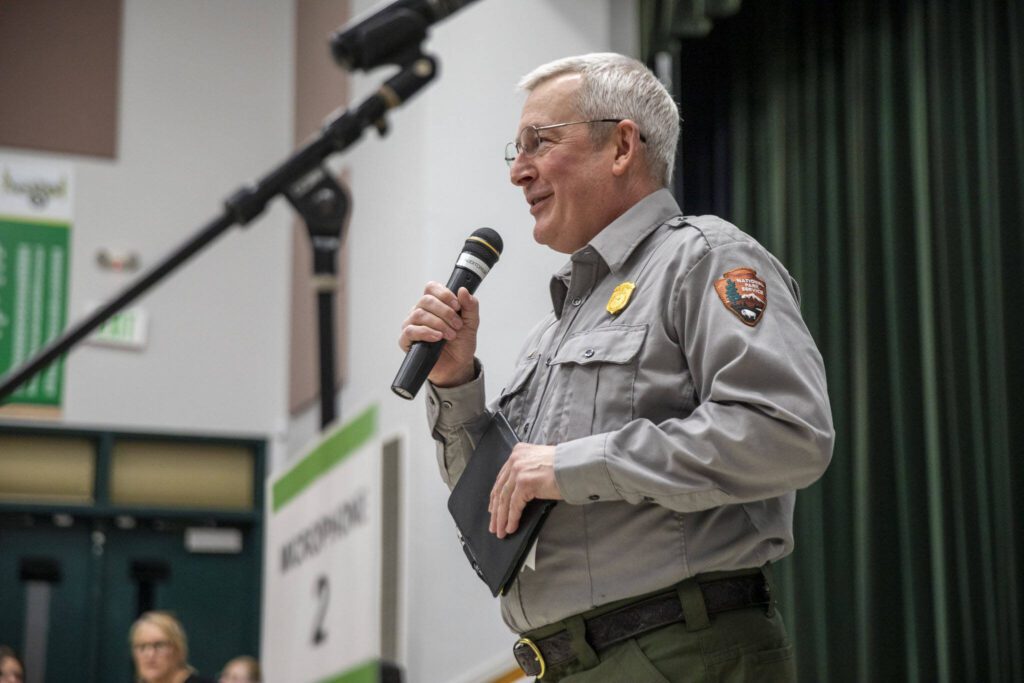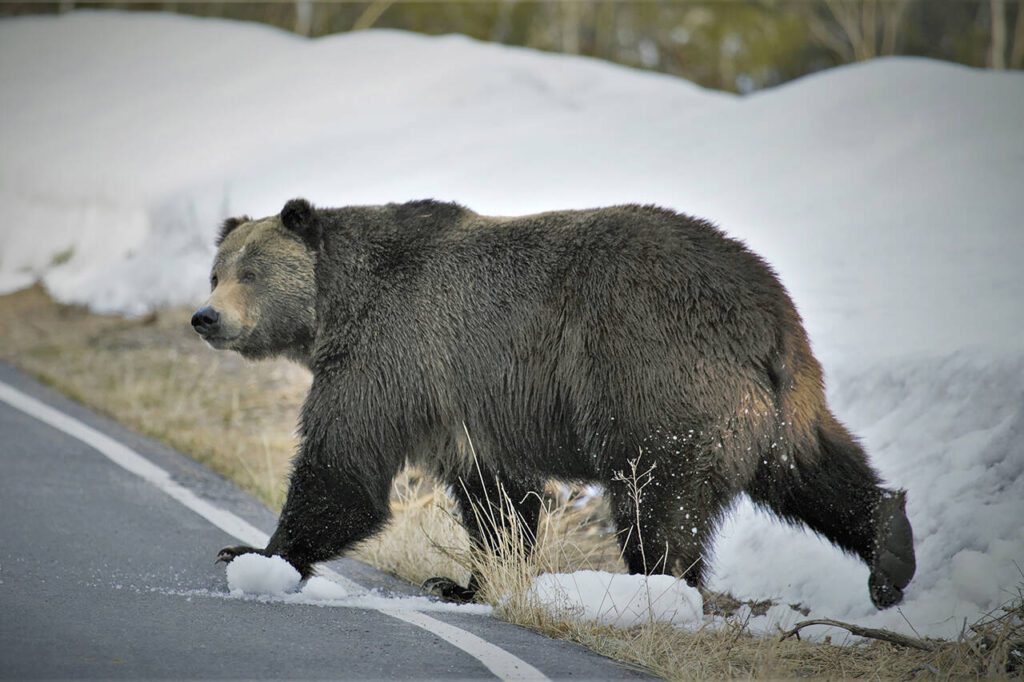DARRINGTON — Andy Holland had been hiking near Meadow Mountain, about 20 miles east of Darrington in summer 1943, when he and his wife Dolly spotted a grizzly bear — one that several of his fellow rangers had told him campfire stories about.
In his memoir “Switchbacks,” the longtime U.S. Forest Service ranger recalled sprinting away at the sight: an alpha predator lunging in their direction. But when he learned hunters shot the animal that autumn, he still felt “an old friend had been killed.”
Holland’s account was one of the final documented sightings of grizzlies in Washington in the 1900s. But it isn’t listed in a typewritten record of encounters in the North Cascades, compiled in 1980, that shows the massive bears roamed the woods until just a few generations ago. The last confirmed sighting was in 1996, a testament to their extermination in even the most remote reaches of the Cascades.
Eighty years after Holland’s story, a public meeting Thursday in Darrington drew a packed house of locals almost unanimously opposed to the proposed reintroduction of grizzly bears in the region.
The federal agencies have been considering three options:
• not releasing any grizzly bears;
• releasing three to seven bears every five to 10 years, until the ecosystem reaches a population of 25, with the ultimate goal of 200 bears a century from now;
• or releasing the same amount of bears, while giving “local communities” more legal authority to “manage” the population to avoid human-grizzly conflicts.
Chris Servheen, a retired grizzly bear recovery coordinator for U.S. Fish and Wildlife, said the feedback portion provides outlets for people to voice concerns, but doesn’t accurately reflect overall public opinion on the bears.
“They think they’re going to look out their door and see a grizzly standing in their driveway,” Servheen said.
The meeting at Darrington High School was one of five public comment sessions hosted this fall by U.S. Fish and Wildlife and the National Park Service. Staff said public feedback will guide the decision on whether to reintroduce the bears to northern Washington.
Rangers and biologists were stationed by informational boards outside the auditorium, interacting with residents who filed in.
A few attendees made signs. One read: “Hell no to grizzlies.”
Members of the Stillaguamish and Sauk-Suiattle tribes took the floor before the public comment session. Bears and all animals are a significant part of Indigenous culture, Shawn Yanity, former chair of the Stillaguamish Tribe, told the crowd. But tribal members are worried bears in the North Cascades would diminish already-threatened Chinook salmon populations.
In interviews, biologists said that wouldn’t be the case.
“We don’t want to fight with you,” Yanity said, looking toward the government workers standing nearby. “We need to sustain our culture. We need to sustain our way of life.”
Public comment lasted 2½ hours — with the rangers just listening, not responding, to a steady stream of anti-grizzly sentiment.
“I sometimes go hiking. I don’t want to come upon a bear,” one woman said. “I don’t want to come upon a wolf. I just want to be in a peaceful place.”
“Anybody who has any modicum of common sense at all knows this is not a good idea,” a man said.
Locals were selected through a lottery system and given two minutes to speak.
Bears for the program would likely be transported from around Glacier National Park or Northwestern Montana, a population chosen for their berry-based diets.
Servheen said he understands locals’ concerns about livestock, salmon and public safety for residents — and that’s why the federal agencies want to be careful.
These particular bears “don’t know how to fish or look for live salmon,” he said.
Servheen said it would take biologists at least 40 years to establish a stable grizzly population in the North Cascades, given their slow reproductive rate and the gradual process to release them into the wilderness.
Jack Oelfke, a Mount Vernon resident and retired chief of cultural and natural resources at North Cascades National Park, was one of the few in support of grizzly reintroduction Thursday.
Before retiring from the National Park Service, Oelfke attended an earlier round of public comment in 2020. He knew there would be strong opposition in Darrington, so he wanted to participate, stressing from his own experience here and in Glacier National Park. Co-existence with grizzly bears is entirely possible, he said.
Oelfke said throughout discussions like this, he is reminded of a quote from writer Lois Crisler — one he shared toward the end of his remarks Thursday.
“Wilderness without wildlife is just scenery.”
Want to chime in?
Other public hearings were held over the past week in Okanogan, Newhalem and Winthrop.
People are able to submit public comment via mail or online until Nov. 13. Agencies expect a final Environmental Impact Statement to be available next spring.
Ta’Leah Van Sistine: 425-339-3460; taleah.vansistine@heraldnet.com; Twitter: @TaLeahRoseV.
Talk to us
> Give us your news tips.
> Send us a letter to the editor.
> More Herald contact information.




























